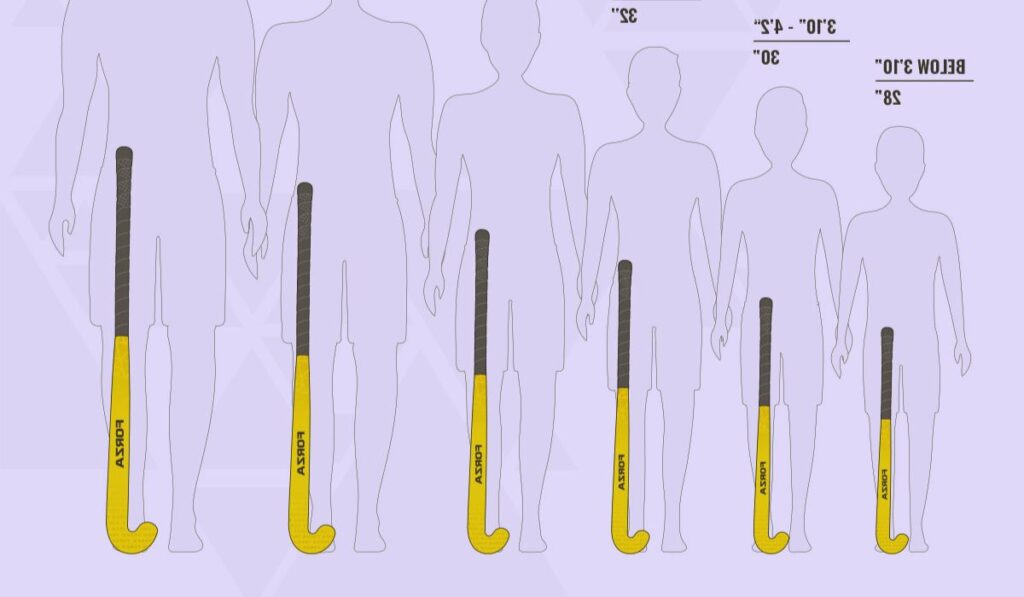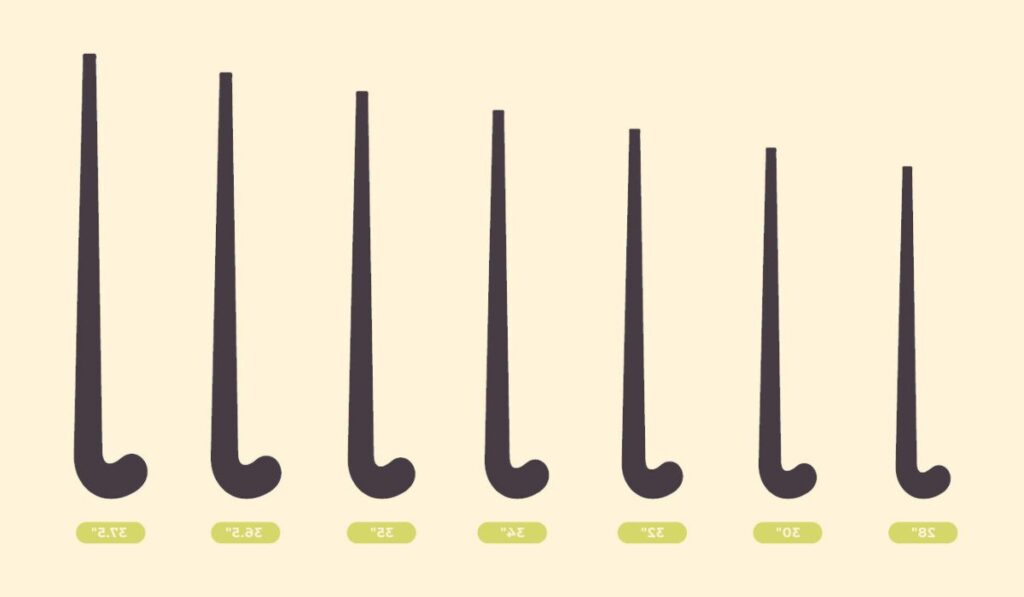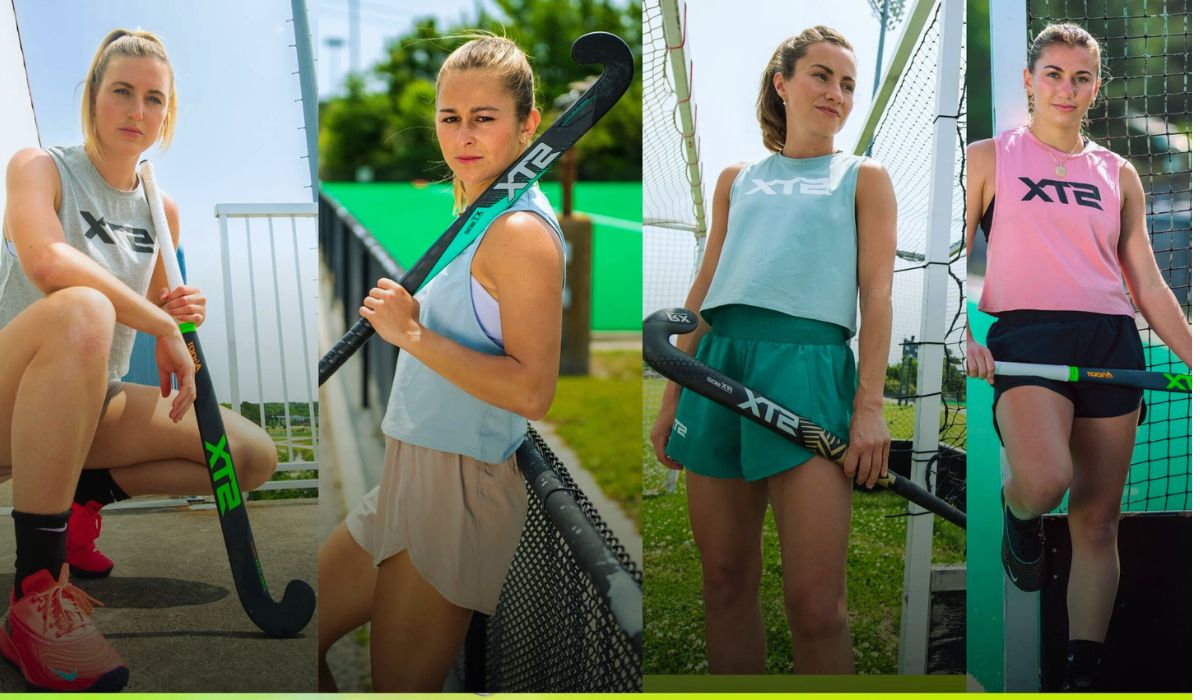If you’ve ever felt like your hockey game is a bit off—slower reactions, poor balance, or clumsy handling—it might not be your skill. It could be your stick. One of the most overlooked yet critical aspects of hockey gear is the height of your stick. While it may seem like a small detail, choosing the wrong length can lead to frustrating mistakes, long-term injury, or simply poor performance.
This guide will walk you through everything you need to know about hockey stick height, helping you pick the right one based on your position, body type, and playing style. You’ll also learn the emotional and physical differences it makes—and how a small adjustment could spark a big shift in your confidence on the field or rink.
What Is Hockey Stick Height and Why Does It Matter?
Hockey stick height refers to the length of the stick from the butt end to the blade’s heel. At first glance, it seems like a standard spec, but it dramatically affects how well you shoot, pass, defend, and handle the puck or ball. A stick too long or too short will throw off your posture, restrict your reach, or even risk muscle strain.
Professionals fine-tune their stick height because they understand its impact on control and power. For casual players, getting it right is the first step toward better play.
Standard Stick Height Guidelines: The Basics
There are some general rules that most coaches recommend:
- For Ice Hockey: When standing in skates, the stick should reach your chin.
- For Field Hockey: The stick should come up to your hip bone.
- For Street or Ball Hockey: Aim for chest height without skates.
While these benchmarks work for beginners, they don’t account for playstyle or role. That’s where personal adjustment comes in.
Shorter Sticks: Precision Over Reach
A shorter stick gives you more control. Players who love weaving through defenders, quick wrist shots, or tight puck handling tend to go shorter Hockey Stick. The stick allows for closer stickhandling and a lower center of gravity, giving you a grounded, responsive feel.
However, the downside is that you lose reach. On defense or when trying to poke-check, you may find yourself stretching or falling short.
Longer Sticks: Power and Reach, But at What Cost?
A longer stick boosts your reach and can increase your shot power, especially slap shots. Defensemen and enforcers often prefer this for poke-checking and keeping attackers at bay.
Yet, longer Hockey Stick can compromise puck control and handling. They can also strain your lower back if you hunch too much, affecting your posture over time.

Finding Your Perfect Fit: More Than Just Height
The ideal Hockey Stick isn’t just about body height. Your arm length, skating posture, and position all influence the ideal length.
- Wingers and Forwards usually want better control—so slightly shorter sticks help.
- Defenders benefit from longer reach—thus longer sticks suit them.
- Goalies use a different kind altogether, built for blocking and deflecting.
If you’re a hybrid player or still figuring out your position, you might want to test different sizes before committing.
How To Measure Proper Hockey Stick Height at Home
You can try this simple method:
- Stand barefoot.
- Hold the Hockey Stick upright (blade flat on the ground).
- The top of the stick should come up to your nose.
- If you’re measuring with skates on, it should align with your chin.
For field hockey, stand upright with the stick next to your leg—aim for the top to hit your hip bone.
Sensory Feel: The Emotional Difference the Right Height Makes
There’s an emotional shift that happens when your Hockey Stick feels “just right.” You suddenly feel more connected to the puck or ball. Your movements are sharper, your confidence grows, and you stop second-guessing your reach or shot.
That feeling—the harmony between your body and your equipment—is what separates mediocre play from truly satisfying hockey.
How Stick Height Impacts Passing and Shooting
The angle of your blade changes slightly depending on your stick length. A too-long stick can lift your blade off the surface, weakening your control. A short one might limit your range of motion during a slap shot.
If you’re missing passes or sending weak shots, your Hockey Stick height may be the invisible culprit.
Customizing Stick Height: Cut or Add Extensions
Most wooden and composite Hockey Stick can be cut down with a saw. Be careful: cutting changes the flex rating too. Shortening a stick makes it stiffer. Conversely, extensions can be added for taller players, but they also add weight.
Always test after altering to make sure it feels balanced in your hands.
The Silent Damage of Wrong Stick Height: Injury Risks
A poorly sized Hockey Stick can lead to more than poor performance—it can cause physical strain. Too long, and your lower back suffers. Too short, and your wrists and shoulders take the hit. Long-term misuse can cause chronic injuries, especially for players who train regularly.
This is one of those hidden dangers few talk about until it’s too late.
Junior Players and Stick Height: Let Them Grow With It
Kids grow fast, and so do their Hockey Stick needs. But buying a stick too big so they “grow into it” is a mistake. It can throw off their form and cause bad habits that are hard to unlearn.
Instead, buy a size that fits today, and re-evaluate every few months.
Pro Insights: How NHL and International Players Choose Stick Height
Many professional players adjust their sticks by just a few millimeters. Why? Because they know how sensitive handling and balance are. Players like Sidney Crosby, for example, use slightly shorter Hockey Stick for superior puck control. Others like Zdeno Chara favor long sticks to dominate defensively.
Each player fine-tunes length based on feel, playstyle, and role.
Stick Flex vs Height: A Delicate Balance
As mentioned, cutting your stick short makes it stiffer. This affects how much energy is transferred when you shoot. Some players want a whip-like flex for quick shots. Others want stiff flex for booming slap shots. Stick height affects this relationship—so always consider flex when adjusting height.
Common Mistakes When Choosing Stick Height
- Relying only on height without considering arm length or position
- Ignoring posture changes between skating and standing
- Over-customizing without testing
- Assuming longer = better for power
- Neglecting pain or discomfort after using a stick
Field Hockey vs Ice Hockey: Different Rules, Same Importance
In field hockey, stick height affects ball control and dribbling. Since there’s no puck, it’s about how the stick interacts with the grass or turf. If your stick is too long, you’ll fumble close passes and lose quick maneuvers.
Field hockey sticks also have strict length limits—usually capped at 38.5 inches. But even within that, finding the right height is essential for comfort and speed.
The Psychological Edge: Why Comfort Equals Confidence
When your stick feels like an extension of your body, your confidence skyrockets. You’re not distracted by discomfort or second-guessing. This freedom lets you focus on the game. It’s not just gear—it’s mindset. And mindset wins matches.
Stick Height in Women’s and Youth Hockey: Slight Differences
Women and youth players often need slightly shorter sticks due to differences in height, arm length, and strength. That said, preference still rules. Each player should be fitted based on feel, not stereotypes. Never settle for one-size-fits-all.
Stick Brands and Pre-Cut Heights: What to Watch For
Brands like Bauer, CCM, Grays, and TK offer pre-cut models with slight differences. Some are designed for taller builds; others focus on low-profile players. Always check the spec sheet, and don’t be afraid to ask for measurements before buying.
Final Advice: Don’t Let Stick Height Be an Afterthought
Too many players focus on shoes, jerseys, or blades and forget that the stick is their most-used weapon. Treat it like a tool that requires precision. Measure, test, adjust, and most of all—listen to your body.
The Influence of Stick Height on Ball Control
Ball control is everything in hockey. A stick that is too long often limits a player’s ability to dribble smoothly or pull off intricate stick-work. On the other hand, a shorter stick may allow more agility but limits reach. Finding a balanced height ensures you’re not sacrificing control for convenience. This is especially critical for midfielders who need fast reflexes and fluid control during intense matchups.
Stick Height in Youth Hockey
When it comes to young players, many parents make the mistake of buying a larger stick thinking it will last longer. However, if the stick is too tall, it affects their form and development. Coaches often recommend using a stick that comes just below the belly button for beginners. This encourages proper handling and builds confidence early in their journey.
Defensive Players and Taller Sticks
Defenders usually prefer longer sticks. The extended reach allows them to intercept passes and push the ball away from attackers. However, if the stick becomes too long, it might affect balance and agility during sudden turns. Choosing the right height involves understanding one’s playing responsibilities and comfort with the stick during backpedaling and tackling.
Shorter Sticks for Forwards
Attackers often go for shorter sticks. This gives them greater wrist flexibility and faster stick movements, which are essential for quick dodges and goal-scoring opportunities. A shorter stick helps forwards stay close to the ball and maneuver efficiently in tight spots near the opponent’s D-circle.

Height Adjustments in Modern Game
Modern hockey has evolved. With faster turf and more dynamic gameplay, many professional players now customize their sticks’ height slightly beyond traditional charts. Some trim a few centimeters for faster flicks, while others extend for drag flicking leverage. Personalization has become a powerful trend, especially in elite leagues.
The Role of Stick Height in Aerials and Flicks
Executing clean aerial passes or drag flicks requires optimal stick height. A stick that’s too short can restrict the lever action needed for lift. Conversely, too long a stick might be hard to control under pressure. Skilled players often test various lengths during practice to perfect their technique.
Balancing Comfort and Function
Comfort often trumps theory. Some players stick to a certain height because it simply “feels right.” The mental aspect of confidence in your stick matters just as much as physical suitability. If a certain height allows you to move naturally and play instinctively, it’s likely the right one for you—even if it deviates from standard recommendations.
Testing Stick Height Before Buying
Before purchasing a stick, try it on turf. See how it feels when dribbling, tackling, and flicking. Many sports stores or clubs offer demo sticks for this very reason. Test how far your arms stretch, how your back aligns, and whether your stance feels strained. A stick may look good on paper but only real-time handling reveals its true fit.
Custom Stick Height Cutting
If you love a stick but it’s a little too tall, many players opt to cut the handle to their liking. This allows them to enjoy the stick’s balance, weight, and flex while adjusting the length for better usability. But be cautious—once cut, it can’t be undone. Only trim if you’re sure about the ideal length.
Conclusion: Personalize Your Perfect Fit
Choosing the correct hockey stick height is both a science and an art. While charts and coach advice provide a starting point, only your personal style, comfort, and performance needs will help you decide the best height. Stick with what enhances your confidence, boosts your game, and allows you to express your full potential on the field.
How Surface Type Affects Stick Choice
The type of surface you play on—whether it’s water-based turf, dry artificial grass, or even indoor courts—can influence your ideal stick height. Faster turfs often favor shorter sticks for quick turns and low dribbling, while bouncier surfaces may benefit from slightly longer sticks for added reach and control. Always consider where you’ll play most often before finalizing your stick length.
Stick Height vs. Player Posture
Your posture during gameplay plays a critical role in determining the ideal stick height. Players with a naturally low stance might prefer slightly shorter sticks to keep the ball closer and maintain better control. Taller players, however, need to balance between their height and comfort, ensuring the stick complements their posture rather than forcing an awkward bend or an upright stance.
The Psychological Edge of a Perfect Fit
Wielding a stick that feels just right gives players a quiet confidence. You instinctively know your reach, your stopping zone, and how far you can push or pull the ball. When your stick height is off—even by an inch—you’ll feel it in your play. That discomfort can chip away at your performance. A well-suited stick height gives you mental peace, allowing you to focus on tactics, not tools.
Mistakes to Avoid When Selecting Stick Height
One common mistake players make is copying their teammates’ stick sizes without considering body structure or playing role. What works for a forward won’t suit a defender. Another mistake is sticking with an ill-fitted stick simply because it’s new or expensive. The right height isn’t about price—it’s about playability and comfort.
Adjusting as You Grow
Especially for younger players, growth spurts can quickly make a once-perfect stick feel awkward. It’s important to reassess stick height every few months during the growing years. Don’t force yourself to use a stick just because you recently bought it. Performance will always be worth the investment in the long run.
The Final Word: Your Stick, Your Story
At the end of the day, your hockey stick is an extension of your body. Its height should support your movement, not restrict it. There’s no one-size-fits-all answer. Whether you’re aiming for explosive speed, surgical precision, or dominant defense, the right stick height brings those ambitions to life. Trust your instincts, test thoroughly, and choose the height that feels like home on the field.
Summary: Find Your Sweet Spot and Transform Your Game
Hockey isn’t just about speed or strength. It’s about control, awareness, and flow. And none of that happens with the wrong stick height.
Choosing the right hockey stick height can unlock potential you didn’t know you had. It may be the missing link between your current game and the one you dream of playing. So take your time, measure well, and find the stick that moves with you, not against you.

